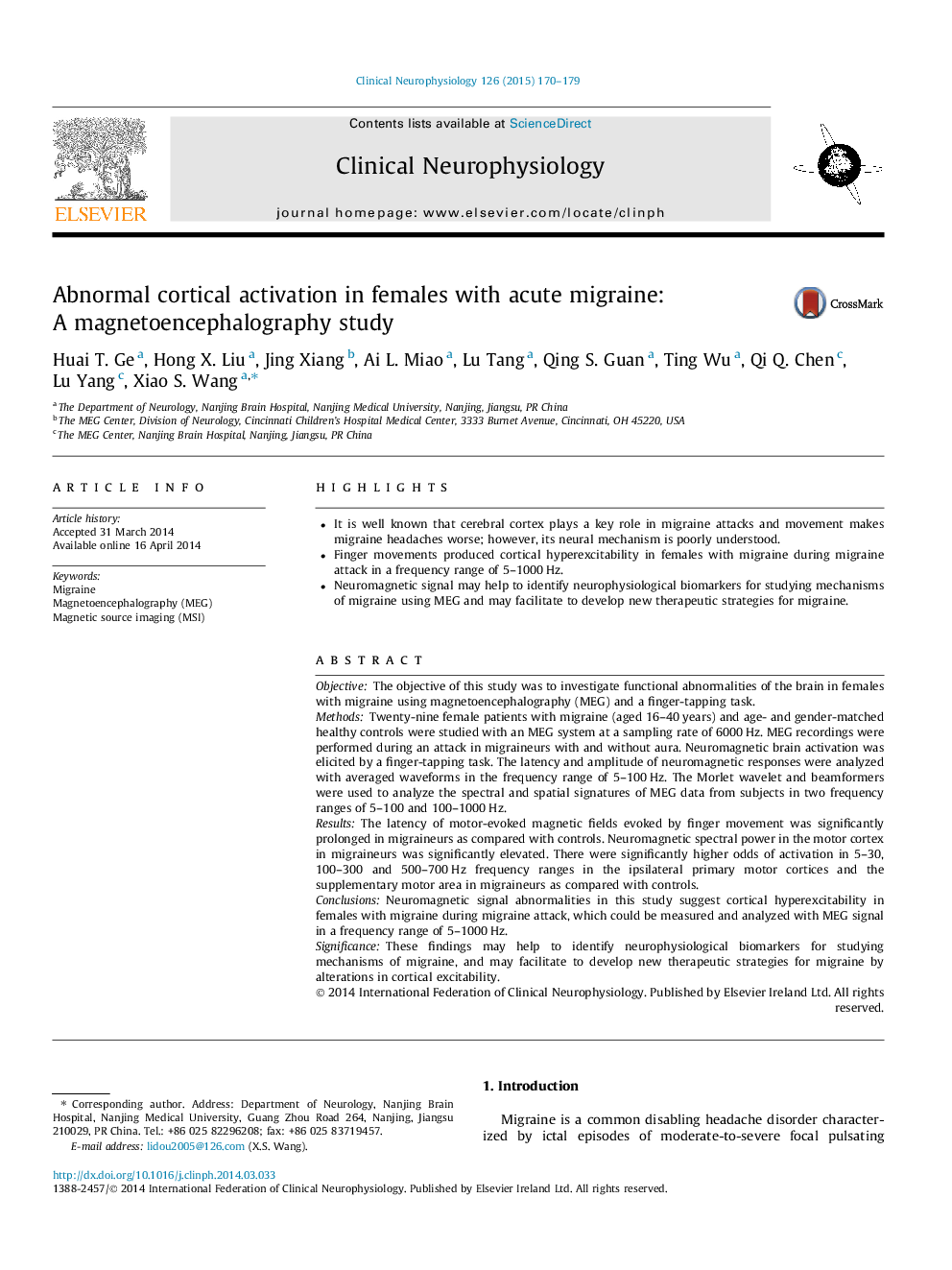| Article ID | Journal | Published Year | Pages | File Type |
|---|---|---|---|---|
| 3043224 | Clinical Neurophysiology | 2015 | 10 Pages |
•It is well known that cerebral cortex plays a key role in migraine attacks and movement makes migraine headaches worse; however, its neural mechanism is poorly understood.•Finger movements produced cortical hyperexcitability in females with migraine during migraine attack in a frequency range of 5–1000 Hz.•Neuromagnetic signal may help to identify neurophysiological biomarkers for studying mechanisms of migraine using MEG and may facilitate to develop new therapeutic strategies for migraine.
ObjectiveThe objective of this study was to investigate functional abnormalities of the brain in females with migraine using magnetoencephalography (MEG) and a finger-tapping task.MethodsTwenty-nine female patients with migraine (aged 16–40 years) and age- and gender-matched healthy controls were studied with an MEG system at a sampling rate of 6000 Hz. MEG recordings were performed during an attack in migraineurs with and without aura. Neuromagnetic brain activation was elicited by a finger-tapping task. The latency and amplitude of neuromagnetic responses were analyzed with averaged waveforms in the frequency range of 5–100 Hz. The Morlet wavelet and beamformers were used to analyze the spectral and spatial signatures of MEG data from subjects in two frequency ranges of 5–100 and 100–1000 Hz.ResultsThe latency of motor-evoked magnetic fields evoked by finger movement was significantly prolonged in migraineurs as compared with controls. Neuromagnetic spectral power in the motor cortex in migraineurs was significantly elevated. There were significantly higher odds of activation in 5–30, 100–300 and 500–700 Hz frequency ranges in the ipsilateral primary motor cortices and the supplementary motor area in migraineurs as compared with controls.ConclusionsNeuromagnetic signal abnormalities in this study suggest cortical hyperexcitability in females with migraine during migraine attack, which could be measured and analyzed with MEG signal in a frequency range of 5–1000 Hz.SignificanceThese findings may help to identify neurophysiological biomarkers for studying mechanisms of migraine, and may facilitate to develop new therapeutic strategies for migraine by alterations in cortical excitability.
